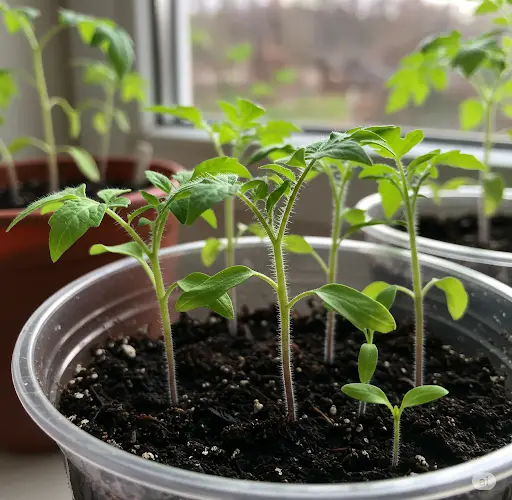Tomatoes are a favorite among home gardeners, cherished for their vibrant flavor and versatility. Achieving robust, healthy tomato plants often requires attentive care and the right nutrients. One natural, cost-effective method gaining popularity involves using banana peels to enhance tomato growth. This article explores how incorporating banana peels into your gardening routine can lead to thicker, lusher tomato plants.
The Nutritional Power of Banana Peels
Banana peels are more than just kitchen waste; they are rich in essential nutrients beneficial to plant growth. Key components include:
-
Potassium: Vital for overall plant health, potassium aids in photosynthesis, water regulation, and disease resistance.
-
Phosphorus: Supports strong root development and flower formation.
-
Calcium: Helps prevent blossom-end rot, a common issue in tomatoes.
-
Magnesium and Sulfur: Contribute to chlorophyll production and enzyme function.
These nutrients make banana peels an excellent organic supplement for tomatoes, especially during the seedling stage.
Applying Banana Peels to Tomato Seedlings
To utilize banana peels effectively:
-
Preparation:
-
Collect banana peels and cut them into small pieces to accelerate decomposition.
-
Optionally, dry the pieces to reduce the risk of attracting pests.
-
-
Application:
-
When transplanting tomato seedlings, place approximately one teaspoon of chopped banana peel into the planting hole.
-
Position the seedling above the peel pieces and cover with soil.
-
This method provides a slow-release fertilizer, delivering nutrients directly to the root zone as the peel decomposes.
Alternative Methods: Banana Peel Tea and Powder
Beyond direct application, banana peels can be transformed into liquid or powdered fertilizers:
-
Banana Peel Tea:
-
Soak chopped banana peels in water for 2–3 days.
-
Strain the liquid and use it to water tomato plants, supplying nutrients in a readily available form.
-
-
Banana Peel Powder:
-
Dry banana peels thoroughly and grind them into a fine powder.
-
Sprinkle the powder around the base of tomato plants to enrich the soil.
-
These methods offer flexibility and can be incorporated into regular watering or fertilizing schedules.
Benefits of Using Banana Peels
Incorporating banana peels into tomato cultivation offers several advantages:
-
Enhanced Growth: Nutrient-rich peels support vigorous plant development.
-
Improved Soil Health: Decomposing organic matter enriches soil structure and microbial activity.
-
Cost-Effective: Utilizing kitchen scraps reduces the need for commercial fertilizers.
-
Environmental Sustainability: Repurposing waste contributes to eco-friendly gardening practices.
Considerations and Best Practices
While banana peels are beneficial, it’s important to use them appropriately:
-
Avoid Overuse: Excessive application can lead to nutrient imbalances or attract pests.
-
Combine with Other Fertilizers: Banana peels lack nitrogen, so supplementing with other organic materials like compost or coffee grounds ensures balanced nutrition.
-
Monitor Plant Response: Observe plants for signs of nutrient deficiencies or excesses and adjust practices accordingly.
By integrating banana peels thoughtfully, gardeners can enhance tomato plant health naturally.
Conclusion
Utilizing banana peels in tomato cultivation is a simple, sustainable method to promote healthy growth. Whether applied directly under seedlings or transformed into tea or powder, banana peels provide essential nutrients that support robust plant development. Embracing this natural approach not only benefits your garden but also contributes to environmentally conscious gardening practices.



